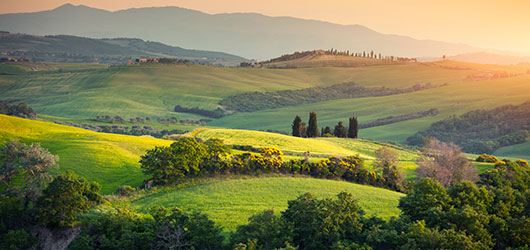Features of natural gas
Features of natural gas
Natural gas is a primary source of energy, which means it is consumed just as it is found in nature. Because there is a constant supply of this gas, it does not need to be stored, and whatever amount is needed is always available.
Natural gas is environmentally friendly:
Unlike other fuel gases, natural gas is lighter than air, so when there is a leak, the gas rapidly dissipates and exits the structure, ensuring greater safety.

Its higher heating value is 10.440 kcal/m3.
Natural gas is found in nature in underground ‘pockets’ covered by impermeable layers of earth that prevent the gas from escaping to the surface. It is held in geological formations, and is usually found in two types of reservoirs:
Proved natural gas reserves
| Region | 1970 | 1975 | 1980 | 1985 | 1990 | 1995 | 2000 | 2005 | 2010 | 2014 | 2015 | 2016 |
|---|---|---|---|---|---|---|---|---|---|---|---|---|
| North America | 9,5 | 8,5 | 8,0 | 8,4 | 7,7 | 6,5 | 6,5 | 7,0 | 9,4 | 11,1 | 12,1 | 11,3 |
| Central and South America | 2,0 | 2,4 | 4,4 | 5,4 | 6,9 | 7,8 | 7,7 | 7,4 | 7,8 | 7,9 | 7,9 | 7,6 |
| Europe (2) | 3,9 | 4,1 | 4,4 | 5,7 | 5,7 | 6,2 | 8,1 | 6,5 | 5,9 | 4,6 | 4,3 | 4,2 |
| CIS | 11,3 | 24,2 | 29,1 | 38,0 | 48,9 | 58,9 | 52,7 | 53,7 | 60,5 | 65,3 | 65,6 | 66,0 |
| Africa | 3,8 | 5,2 | 5,6 | 5,9 | 8,5 | 9,9 | 11,4 | 14,1 | 14,8 | 14,3 | 14,4 | 12,6 |
| Middle East | 6,6 | 15,3 | 18,5 | 25,9 | 37,8 | 44,7 | 54,7 | 72,5 | 75,9 | 80,0 | 79,9 | 79,2 |
| Asia – Oceania | 1,4 | 3,4 | 4,6 | 7,0 | 8,6 | 13,1 | 11,9 | 13,9 | 16,1 | 16,9 | 15,8 | 15,3 |
| World total | 38.5 | 63.1 | 74.6 | 96.3 | 124.1 | 147.1 | 153.1 | 175.1 | 190.4 | 200.1 | 200.1 | 196.0 |
(1) Data from the beginning of each year.
(2) Since 2000, the EU 27 plus Norway, Switzerland, Central Europe and Turkey. Figures from Central Europe are not included in those of previous years, as they were included with the figures of Eastern Europe and the CIS.
Source: CEDIGAZ and Oil and Gas Journal. Graphic produced by Nortegas
How is it measured?
Natural gas is measured in thermies (thm) or cubic metres (m3); one thermie is equivalent to 1000 Kcal, and one m3 is equivalent to approximately 10.44 thermies (the exact value varies according to heating value).
Pressure
Pressure is calculated by dividing an applied force by the area over which the force is distributed. The pressure of a moving gas is the force exerted by the molecules that make up the gas. Pressure is usually measured in bars.
Heat
Heat is one of the ways energy manifests itself.
Temperature
The temperature of a body indicates the kinetic energy of its molecules (in other words, the force with which they move). Temperature is usually measured in degrees Celsius (ºC). The higher heating value of natural gas is 10,440 kcal/m3.

